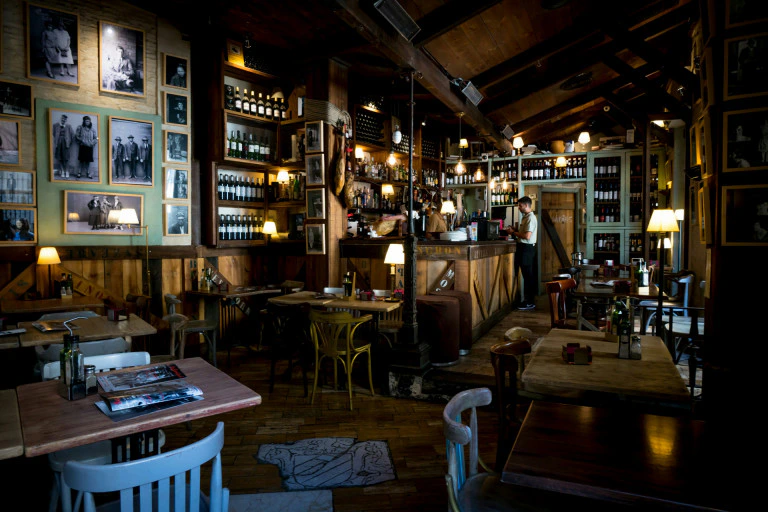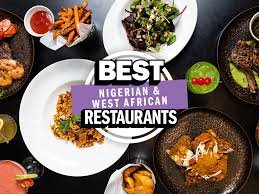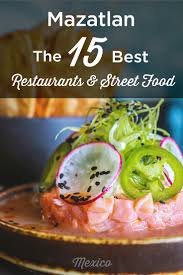50 Creative Restaurant Niche Ideas to Make Your Culinary Venture Stand Out

Starting a restaurant is a dream for many food lovers, but the competition in the food industry is fierce. To succeed, it’s crucial to find a niche that speaks directly to a specific audience, combines your passion with market demand, and sets you apart from generic eateries. Choosing the right restaurant niche can turn your culinary venture into a memorable destination, build loyal customers, and increase profitability.
In this article, we’ll explore 50 restaurant niche ideas across different categories, from health-focused concepts and global cuisines to immersive experiences and innovative business models. Whether you want to open a cozy café, a fast-casual spot, or a fine dining establishment, there’s a niche here to spark your creativity and guide your journey.
Health & Wellness-Focused Niches
Consumers today are more health-conscious than ever. Restaurants that cater to specific dietary needs or wellness trends can tap into a large and growing market.
- Biohacker Café
This niche serves meals and beverages designed to enhance cognitive function and overall well-being. Think nootropic coffees, adaptogen-infused smoothies, and keto-friendly snacks. It’s perfect for busy professionals, students, and wellness enthusiasts looking for a performance boost. - Ayurvedic Restaurant
Inspired by ancient Indian wellness practices, this restaurant designs menus based on dosha types (Vata, Pitta, Kapha). Personalized plates help balance body and mind, combining nutrition with traditional medicine. - Low-Carb / Keto Café
With the keto diet’s popularity soaring, a restaurant specializing in low-carb, high-fat dishes can attract a dedicated audience. Offerings might include lettuce-wrapped burgers, bone broth, and creamy fat bombs. - Raw Food Bistro
Serving uncooked, plant-based dishes to preserve nutrients and enzymes, a raw food restaurant appeals to purists and eco-conscious diners who want fresh, natural flavors. - Diabetic-Friendly Diner
Many diabetic customers struggle to find flavorful, safe options when dining out. A restaurant focused on low glycemic index meals, sugar-free desserts, and balanced nutrition could fill this niche effectively.
Allergy-Friendly & Specialized Diet Niches
Dining restrictions are common, and restaurants catering to allergens and special diets are becoming more popular.
- Allergen-Free Café
Focus on gluten-free, dairy-free, nut-free, and other allergen-safe dishes. Transparency and safe dining environments help build trust with sensitive diners and families. - Plant-Based Soul Food
Vegan versions of classic soul food—like cauliflower wings, tofu mac ‘n’ cheese, and jackfruit BBQ—can appeal to both vegans and meat-eaters craving comfort food without animal products. - Fermentation Bar
Serve kombucha, kimchi, kefir, and other probiotic-rich foods and drinks. The fermentation niche aligns with gut health trends and foodie curiosity. - Functional Salads & Bowls Spot
Superfood bowls packed with protein, fiber, and anti-inflammatory ingredients cater to post-workout clients and nutrition-aware diners looking for quick, wholesome meals.
Underrepresented Global Cuisines
There’s an increasing appetite for authentic, flavorful dishes from regions not often highlighted in mainstream dining.
- West African Kitchen
Offer vibrant dishes like jollof rice, egusi stew, and suya skewers. West African cuisine is bold, colorful, and gaining global recognition. - Georgian Restaurant
Specialize in dishes like khachapuri (cheese bread), khinkali (dumplings), and walnut sauces. Georgian cuisine’s unique flavors and textures are attracting adventurous eaters. - Central Asian Cuisine
Think Uzbek plov, Kyrgyz laghman, and Afghan mantu dumplings—rich in spices and tradition, but still rare in many cities. - Cuban Street Food Café
Serve cubanos, ropa vieja tacos, and tostones in a vibrant, lively atmosphere that evokes Cuban culture. - Filipino-Fusion Lounge
Bring Filipino favorites like adobo, sinigang, and ube pancakes to fusion menus with global twists, increasing their mainstream appeal. - Basque Pintxos Bar
Small bite-sized snacks served on bread with toothpicks, paired with cider or wine—perfect for casual social dining.
Format & Serving Style Niches
Innovative dining formats can enhance guest experiences and make your restaurant stand out.
- Single-Item Specialty
Focus on one core item, like a grilled cheese bar or dumpling boutique, perfecting every variation and building strong brand identity. - Rice or Bowl House
Offer customizable rice bowls with global flavors such as bibimbap, teriyaki, or nasi lemak. Fast, fresh, and flexible. - Soup & Broth Café
Highlight global soup varieties like ramen, pho, tom kha, or borscht, offering comfort and gourmet touches. - Bento Box Bar
Japanese-inspired customizable lunch boxes are perfect for grab-and-go customers or casual sit-downs. - Mobile Hot Pot or Ramen Cart
Interactive dining with personal hot pots or ramen bowls offers social engagement and sensory delight. - Dessert-Only Experience
From churro bars to pudding cafés, focus on indulgent sweet treats that attract dessert lovers and social media enthusiasts.
Themed & Experience-Based Concepts
People crave memorable experiences, and dining can be as much about atmosphere and storytelling as food.
- Time-Travel Dining
Rotate themes by decade or era—1920s speakeasy one month, 1980s arcade diner the next. Keeps the concept fresh and exciting. - Silent Dining Restaurant
Guests eat in complete silence, heightening awareness of flavors and textures—a novel, meditative experience. - Upside-Down Café
Quirky décor where furniture and signage are inverted. A playful spot that creates buzz and social media moments. - Murder Mystery Dinner Theater
Combine interactive storytelling with a meal, inviting guests to solve a mystery while enjoying dinner. - Pet-Friendly Café
Allow pets to dine or visit. Offer pet treats and host pet-centric events, appealing to animal lovers. - Anime & Pop-Culture Café
Inspired by Japanese themed cafés, this niche attracts fans with décor, food names, and events tied to popular culture.
Innovative Business Models
New ways to operate and serve food can reduce overhead, improve flexibility, and cater to modern consumer habits.
- Ghost Kitchen / Virtual Brand
Delivery and takeout only, no dine-in. Low rent, high scalability, multiple cuisines under one roof. - Subscription Meal Concept
Prepaid weekly or monthly meals, curated menus, and exclusive recipes build loyalty and predictable revenue. - Rotating Chef Residency or Pop-Up
Bring in guest chefs or seasonal menus to keep offerings fresh and create buzz. - Micro-Restaurant
Tiny, intimate venues with limited seating and exclusive tasting menus attract foodies and VIP customers. - Food Lab / Experimental Tasting Bar
Molecular gastronomy and creative dishes offer a cutting-edge experience for adventurous diners. - Solar-Powered or Zero-Waste Café
Eco-conscious diners appreciate restaurants focused on sustainability—from ingredients to energy to waste. - Foraged & Wild Ingredients Kitchen
Highlight local, seasonal, and foraged foods to create unique, ever-changing menus.
Audience-Focused Niches
Targeting specific demographics or communities helps build loyal customer bases.
- Mindful or Analog Café
A space to unplug—no phones allowed, board games available, fostering real-world connection. - Co-working Friendly Café
Designed for freelancers and remote workers with strong Wi-Fi, power outlets, and quiet zones. - Kid-Centered Café
Play areas, children’s menus, and healthy snacks designed for families with young kids. - Senior-Friendly Bistro
Early-bird specials, easy-to-chew foods, and accessible seating make dining comfortable for older adults. - Gamer / E-Sports Lounge
Screens for tournaments, themed décor, and late-night snacks attract gaming communities. - Faith-Based Restaurant
Kosher, Halal, or other dietary law-compliant menus serve faith communities. - LGBTQ+ Inclusive Café
Safe, welcoming spaces with pride events and inclusive programming.
Instagrammable & Visual Niches
Visual appeal drives social media attention and free marketing.
- Boba Tea + Bao Combo Spot
Trendy milk teas paired with steamed buns create a colorful, tasty combo. - Alcoholic Ice-Cream Bar
Boozy sorbets, beer floats, and liquor-infused gelato appeal to adults seeking indulgence. - Churro & Donut Fusion Shop
Unique pastries like cronuts, mochi donuts, and churro cones bring fun twists to classic sweets. - Gourmet Donut Diner
Creative toppings and flavors turn donuts into a meal-worthy experience.
Fusion & Mash-Up Concepts
Mixing cuisines creates innovative and exciting menus.
- Japanese-Mexican Street Fusion
Sushi burritos, ponzu fish tacos, and other inventive combinations for adventurous eaters. - Indian-Chinese Fast Casual
Indo-Chinese baos, manchurian samosas, and fiery sauces delight fusion fans. - Peruvian-Italian Crossover
Dishes like lomo saltado pasta and criolla risotto blend two beloved culinary traditions. - Middle Eastern + Southern Comfort
Falafel-po’boys and hummus-smothered fried chicken merge two comfort food worlds.
How to Choose and Launch Your Restaurant Niche
- Research your market to understand local demand and competition.
- Test your concept with pop-ups, events, or catering to gather feedback.
- Develop a strong brand with a clear story, logo, and mission.
- Choose a location and format that fits your niche and budget.
- Plan finances carefully—consider ingredient sourcing, staff, rent, and pricing.
- Launch with a soft opening to refine your menu and operations.
Final Thoughts
Choosing the right restaurant niche is more than picking a cuisine—it’s about crafting an experience and building a community. Whether you want to launch a sleek keto café, a vibrant West African kitchen, or a silent dining experience, your niche is your restaurant’s identity. The more authentic and targeted your concept, the more it will resonate with diners and thrive in a crowded marketplace.
These sites, which include ancients ruins, historic building, monuments, and landscapes, are invaluable resources that offer insights into our cultural identity and historical development.
Jack Thomas

The Important of Cultural Heritages Sites
In the following century, men and women of faith waded into the battles over prison reform and temperance, Public education and women’s rights







